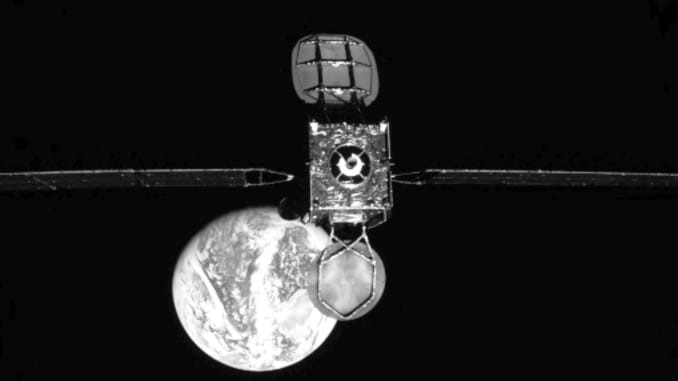The idea that an existing, in-orbit satellite can be programmed to intercept and crash into another satellite, and thus constitutes a potential kinetic Anti-Satellite (ASAT) weapon, is a fallacy; albeit a frequently repeated one. The technical problems in trying to re-purpose the vast majority of current satellites as an ASAT are:-
- Orbits rarely intersect, so the probability that the re-purposed satellite would come anywhere near the target satellite is remote. The satellite would likely need to conduct significant orbital changes, which would require fuel and time.
- The position and velocity of the target object are not known with sufficient precision.
- Orbit models are not accurate enough to propagate the orbits for a collision.
- The satellite’s thrusters cannot be controlled with enough precision. The propulsion systems of normal satellites are designed with the precision required for orbit control to a degree sufficient for their mission. A much higher level of precision is required for intercept.
- The re-purposed satellite would lack a sensor to provide terminal guidance data.
- The re-purposed satellite would lack the control and guidance software required to execute the intercept.

There are, nonetheless, a much smaller number of spacecraft designed for orbital servicing and debris removal missions which do have the required technical attributes to be re-purposed for ASAT activities.
As can be seen from this image of the Intelsat IS-901 satellite, (which was the subject of a servicing mission by Northrop Grumman’s MEV-1), the approaching spacecraft has the camera system needed to achieve rendezvous, and perhaps act as an ASAT. This is essential because, from a terrestrial perspective, a) it is daytime, so optical telescopes cannot assist the engagement, (which is necessarily occurring from the “sunlit” side of the target), and, b). even if it were nighttime, the resolution of most commercial ground-based telescopes is such that the two satellites would “merge” into one unresolved bright point when they were still more than 1 km apart.
This lack of tracking acuity underlines the potential risks associated with proximity operations, which have become increasingly common over the past decade. The US, Russia, and China all have missions with unacknowledged capabilities which have drifted around GEO and have “paused” temporarily at relatively short ranges from a number of military and commercial target satellites. The independent “rendezvous and proximity operations” (RPO) capabilities of these systems, if any, are not publicly known, but they may include the necessary sensing and guidance abilities to operate quite close to another satellite.
The owners of such satellites probably would not wish to destroy a valuable surveillance asset by using it as a “kinetic-kill” weapon, but there are a variety of ways that a hostile satellite, at very short range from a target mission, could potentially interfere with its operations. These include:-
a). Obstructing sensors that are used for coarse attitude control – e.g. shadowing the sun or Earth sensors
b). Blocking the line of sight between the target satellite and the Earth, degrading some of its communications
c). Appearing as a “bright point” in a star-sensor’s field of view, corrupting the target satellite’s precision attitude determination and control subsystem
d). Physically shadowing the solar arrays, affecting the power generation on the target
e). Shadowing the satellite body, affecting the thermal control of the target satellite
f). Making manoeuvres with its thrusters that could physically affect the solar arrays or optical sensors, covering them with contaminants that would degrade their performance
g). Transmitting signals into the satellite’s receivers from very short range, (where even “side-lobe jamming” would be effective.
These techniques would not lead immediately to a “mission kill”, but could degrade the target satellite’s performance at critical times during a military engagement.
In peacetime, however, such proximity operations would hardly be a positive contribution to sustainable space operations.